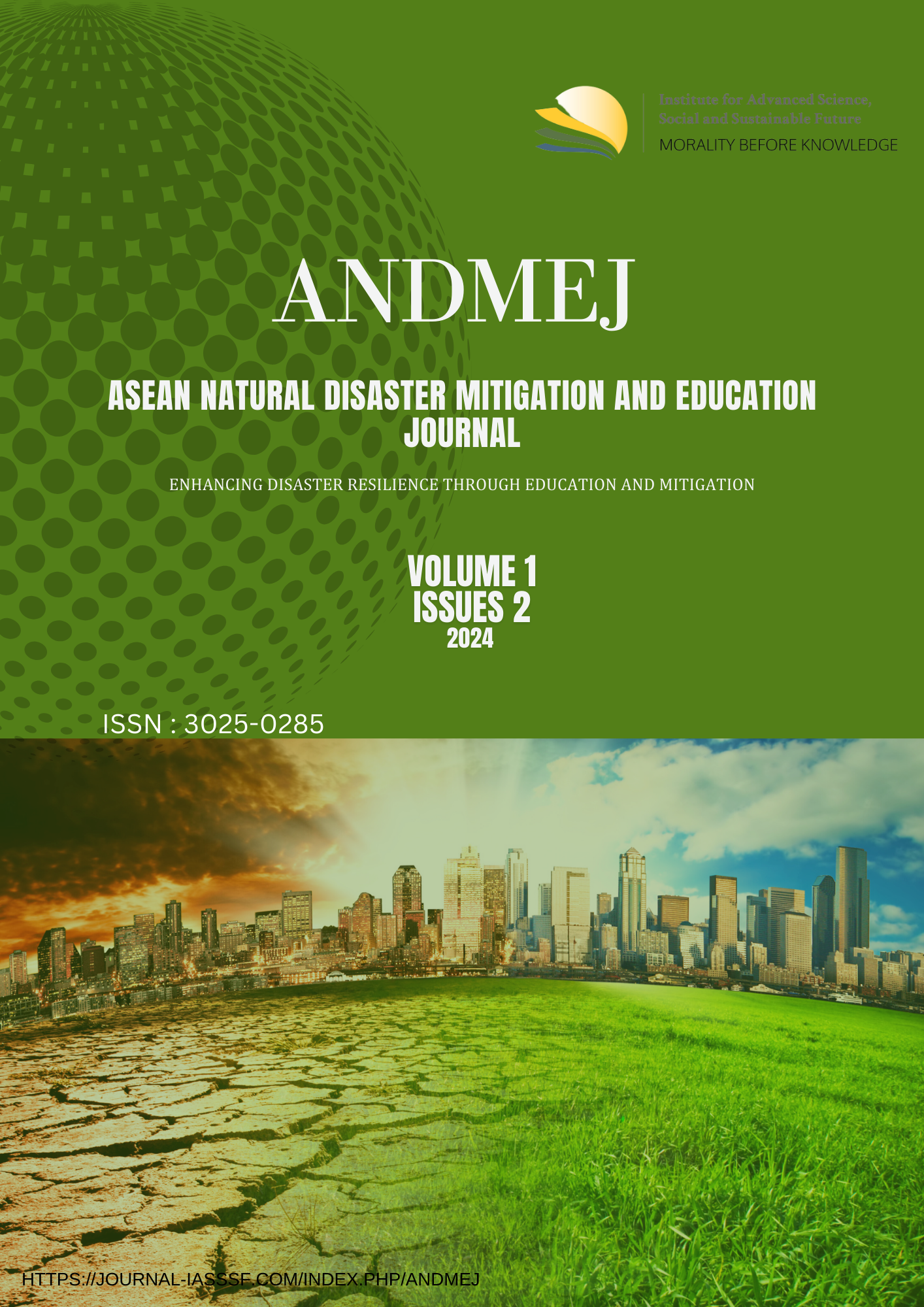South West Khasi hills district, Mawkyrwat, Meghalaya (India) landslides’ 2022: Case studies, lesson learned and mitigation measures
DOI:
https://doi.org/10.61511/andmej.v1i2.2024.382Keywords:
economic development, incessant rain, mitigate, South West Khasi Hills LandslideAbstract
In June of 2022, a series of landslides occurred in the South West Khasi Hills district of Meghalaya during the monsoon season. These events caused significant damage to roads, PHE pipelines, and agricultural areas, and resulted in the deaths of two people and nine animals. The primary cause of the landslides was the incessant rain; Meghalaya being the wettest place on Earth is particularly vulnerable to landslides due to heavy rainfall and extreme tectonic stress. In addition to these natural elements, the construction of roads and excavation activities would have increased the instability of the slopes and increased the risk of landslides. The paper aims to investigate the causes of landslides brought on by intense rains in different economic development, offer solutions to mitigate the effects of such occurrences, and highlight the valuable lessons that may be learned from this regrettable incident.
References
Crozier, M. J. (2010). Deciphering the effect of climate change on landslide activity: A review. Geomorphology, 124(3–4), 260–267. https://doi.org/10.1016/j.geomorph.2010.04.009
Cruden, D.M., & Varnes, D.J. (1996). Landslide types and processes. In: Turner AK, Schuster RL (eds) Landslides investigation and mitigation. Transportation research board, US National Research Council. Special Report 247, Washington, DC, Chapter 3, pp. 36–75.
Davenport, F. V., Burke, M., & Diffenbaugh, N. S. (2021). Contribution of historical precipitation change to US flood damages. Proceedings of the National Academy of Sciences, 118(4). https://doi.org/10.1073/pnas.2017524118
District Disaster Management Authority (DDMA) (2024). South West Khasi Hills District, Mawkyrwat, Meghalaya. https://southwestkhasihills.gov.in/disaster-management/
Froude, M. J., & Petley, D. N. (2018). Global fatal landslide occurrence from 2004 to 2016. Natural Hazards and Earth System Sciences, 18(8), 2161–2181. https://doi.org/10.5194/nhess-18-2161-2018
Handwerger, A. L., Huang, M.-H., Fielding, E. J., Booth, A. M., & Bürgmann, R. (2019). A shift from drought to extreme rainfall drives a stable landslide to catastrophic failure. Scientific Reports, 9(1). https://doi.org/10.1038/s41598-018-38300-0
Handwerger, A. L., Fielding, E. J., Huang, M., Bennett, G. L., Liang, C., & Schulz, W. H. (2019). Widespread Initiation, Reactivation, and Acceleration of Landslides in the Northern California Coast Ranges due to Extreme Rainfall. Journal of Geophysical Research: Earth Surface, 124(7), 1782–1797. Portico. https://doi.org/10.1029/2019jf005035
Handwerger, A. L., Booth, A. M., Huang, M.-H., & Fielding, E. J. (2021). Inferring the Subsurface Geometry and Strength of Slow-moving Landslides using 3D Velocity Measurements from the NASA/JPL UAVSAR. https://doi.org/10.1002/essoar.10504332.2
Handwerger, A. L., Fielding, E. J., Sangha, S. S., & Bekaert, D. (2022). Landslide Sensitivity and Response to Precipitation Changes in Wet and Dry Climates. https://doi.org/10.1002/essoar.10510913.2
Huggel, C., Clague, J. J., & Korup, O. (2011). Is climate change responsible for changing landslide activity in high mountains? Earth Surface Processes and Landforms, 37(1), 77–91. Portico. https://doi.org/10.1002/esp.2223
Hungr, O., Leroueil, S., & Picarelli, L. (2013). The Varnes classification of landslide types, an update. Landslides, 11(2), 167–194. https://doi.org/10.1007/s10346-013-0436-y
Kirschbaum, D., Stanley, T., & Zhou, Y. (2015). Spatial and temporal analysis of a global landslide catalog. Geomorphology, 249, 4–15. https://doi.org/10.1016/j.geomorph.2015.03.016
Petley, D. (2012). Global patterns of loss of life from landslides. Geology, 40(10), 927–930. https://doi.org/10.1130/g33217.1
Petley, D. N., Dunning, S., & Rosser, N. (2005). The analysis of global landslide risk through the creation of a database of worldwide landslide fatalities. In Landslide risk management (pp. 367–374). Balkema. https://doi.org/10.1201/9781439833711-18
Schuster et al., (2001). Socioeconomic impacts of landslides in the Western Hemisphere. US Department of the Interior, US Geological Survey, Denver.
Singh, D., Tsiang, M., Rajaratnam, B., & Diffenbaugh, N. S. (2013). Precipitation extremes over the continental United States in a transient, high‐resolution, ensemble climate model experiment. Journal of Geophysical Research: Atmospheres, 118(13), 7063–7086. Portico. https://doi.org/10.1002/jgrd.50543
Downloads
Published
How to Cite
Issue
Section
Citation Check
License
Copyright (c) 2024 ASEAN Natural Disaster Mitigation and Education Journal

This work is licensed under a Creative Commons Attribution 4.0 International License.
















